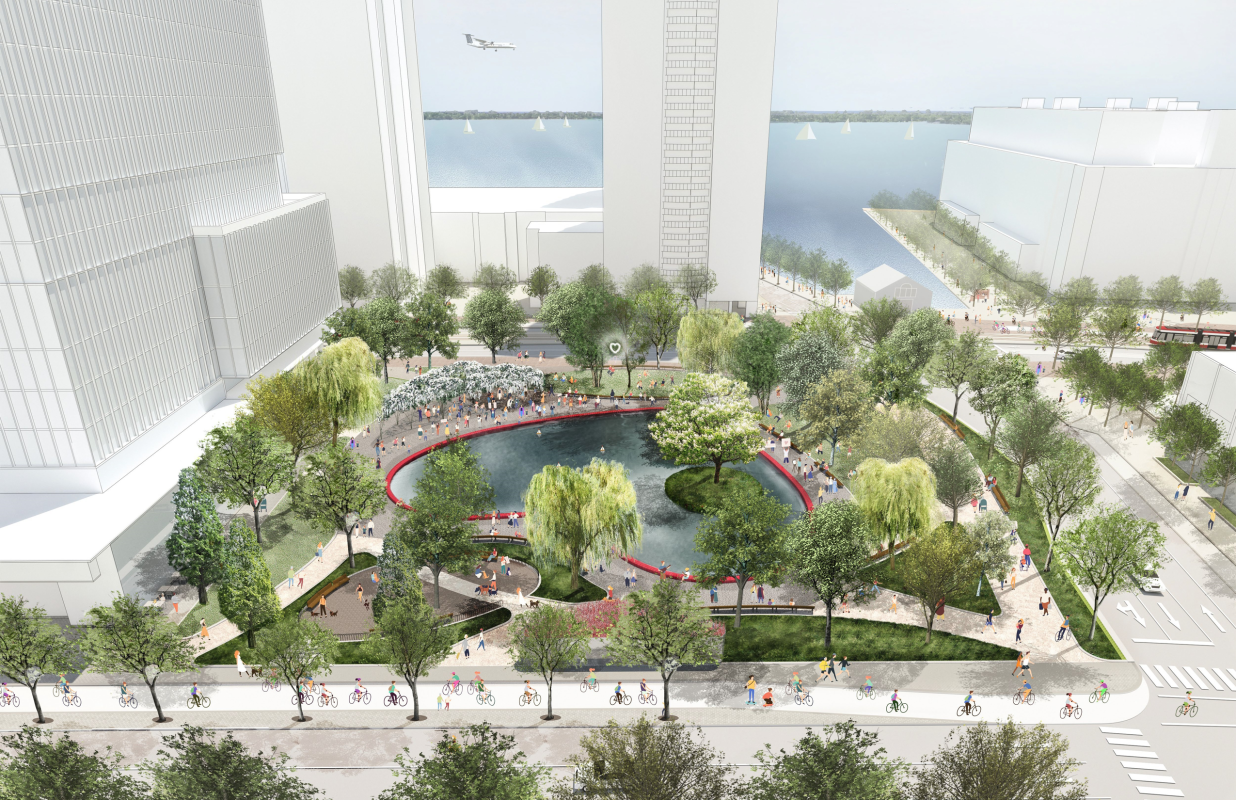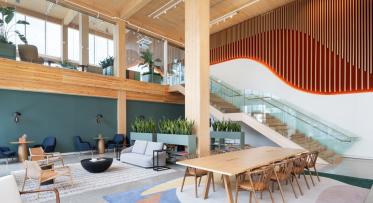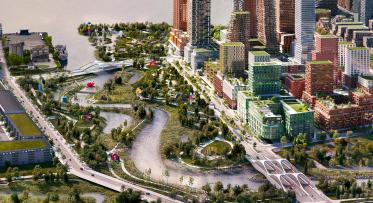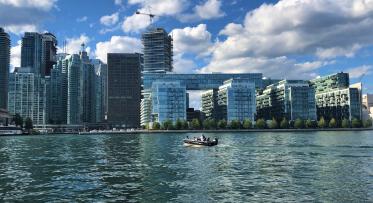Love Park: The Heart of Our Waterfront
In 2021, York Street Park will begin transforming into Love Park – becoming the literal heart of the waterfront.
POSTED: FEBRUARY 25, 2021
BY: KATIE ANDRACHUK
Located in the central waterfront, at the southern foot of York Street and Queens Quay West, this two-acre park will feature a massive heart-shaped pond nested within a lush green oasis of trees, vegetation and open green space. Reclaimed as public space from its former use as the Gardiner’s York-Bay-Yonge eastbound off-ramp, the park will be the ultimate ode to connection, community, and nature.
In this blog, we celebrate the key elements of Love Park’s final design in advance of construction in summer 2021.
The focal point of the park is the heart shaped pond—the universal symbol for love. The pond has been designed to be a quiet place of reflection and gathering. In the daytime, adjacent buildings will have a unique aerial view of the park’s heart shaped pond, which is aligned to “true north.” By night fall, the park’s pink, glowing, heart-shaped light will softly illuminate the pond giving the feeling of a gentle embrace.
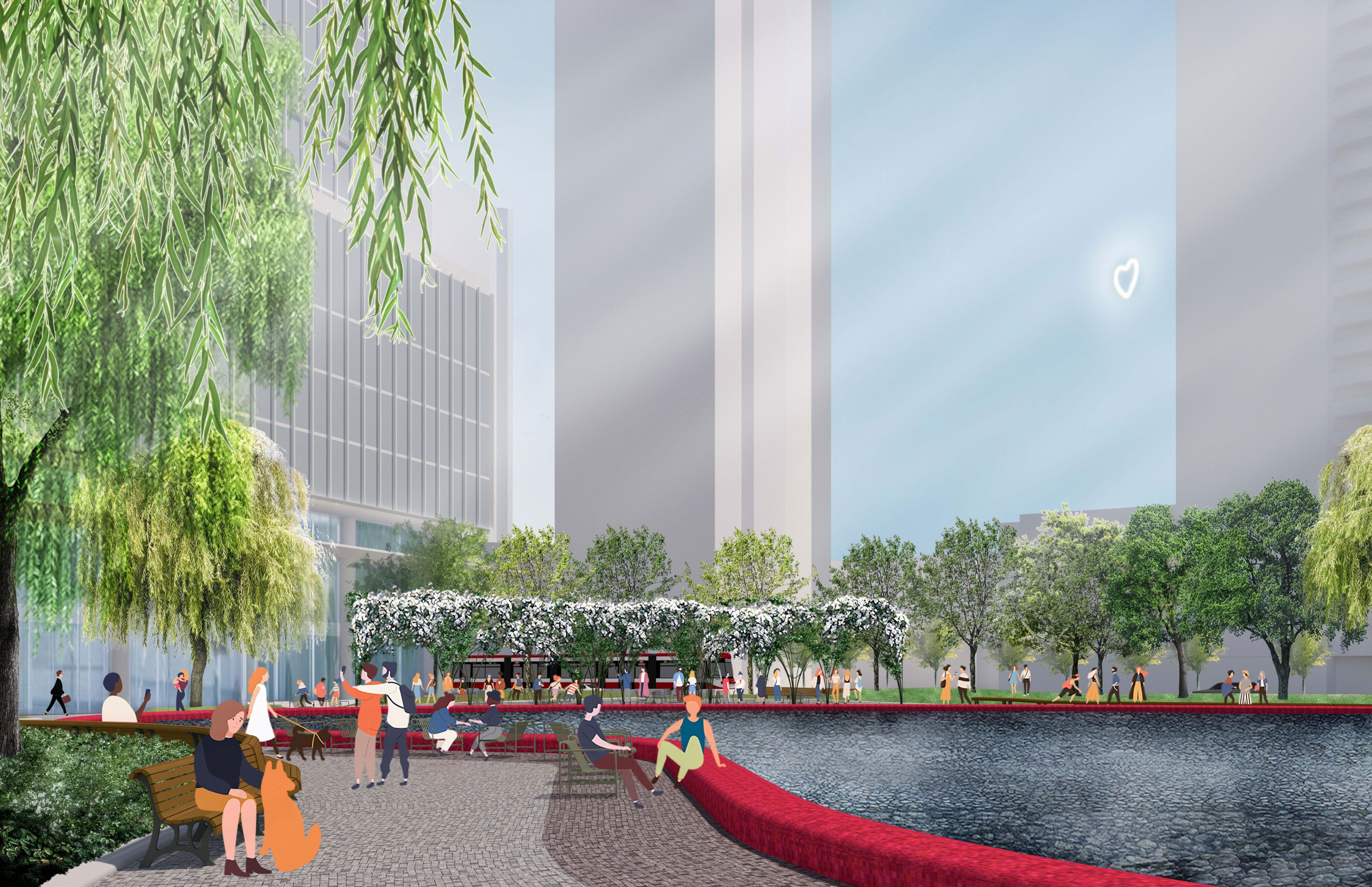 The pond will be a perfect place for gathering or reflection with the edge doubling as seating in the park.
The pond will be a perfect place for gathering or reflection with the edge doubling as seating in the park.
An urban “love seat” 165 meters long, the edge around the pond will be finished with a glass tile mosaic in varying shades of red. Designed for comfort and longevity, the mosaic “love seat” will provide ample opportunity for visitors to sit along the water’s edge—something we think will be particularly popular in the age of social distancing.
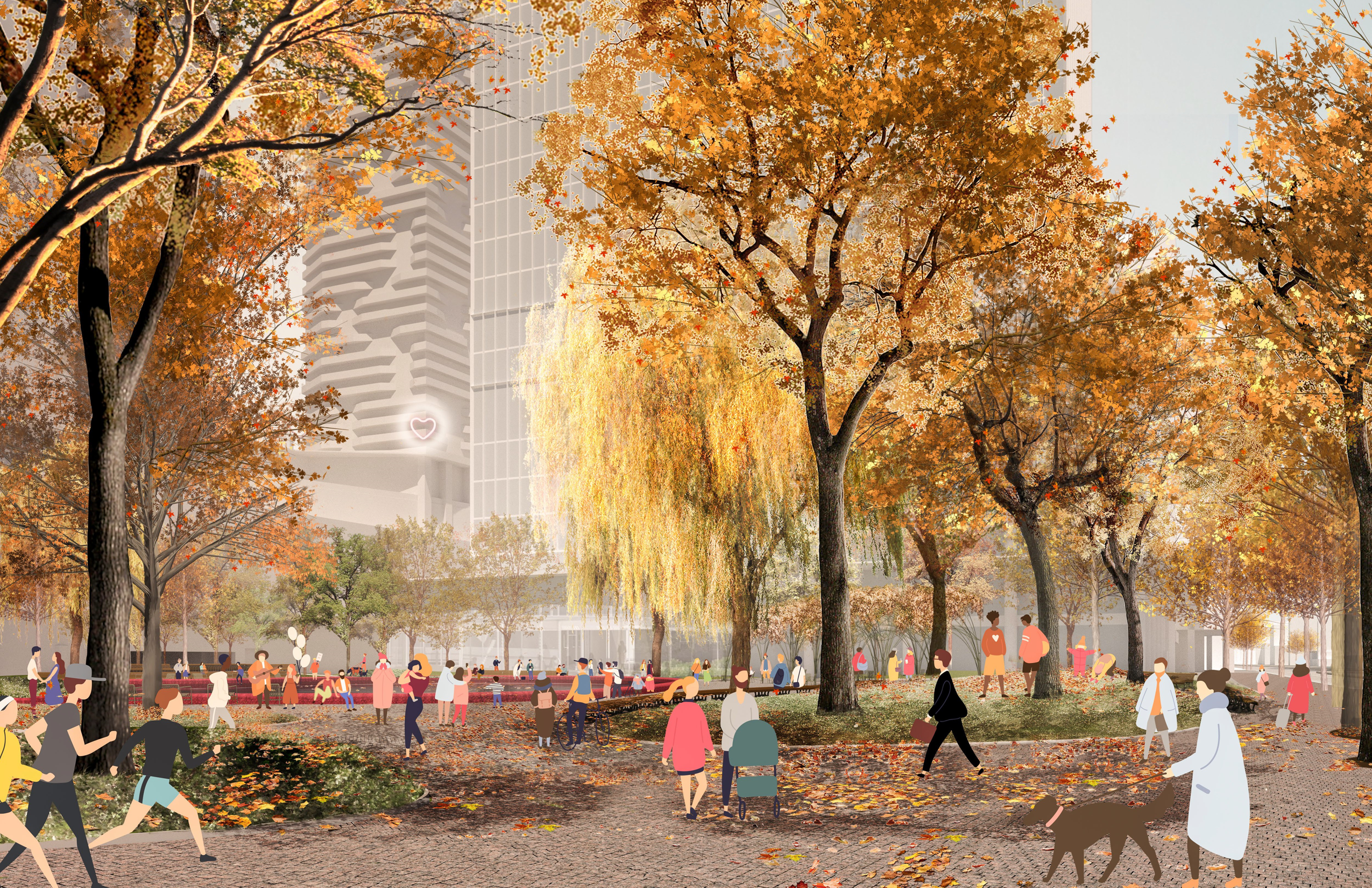 Rolling elevated grassy mounds separate and buffer visitors from the adjacent roadways and offer space to relax and enjoy the park at different vantage points.
Rolling elevated grassy mounds separate and buffer visitors from the adjacent roadways and offer space to relax and enjoy the park at different vantage points.
Tree-lined sidewalks outline the park’s perimeter and internal pathways, marking the transition into a calm urban refuge. The design of the park has maximized the number of trees, with a total of 38 new and 4 mature trees retained, in addition to a mix of lush shrubbery like fragrant sumach, hydrangea, and white wisteria.
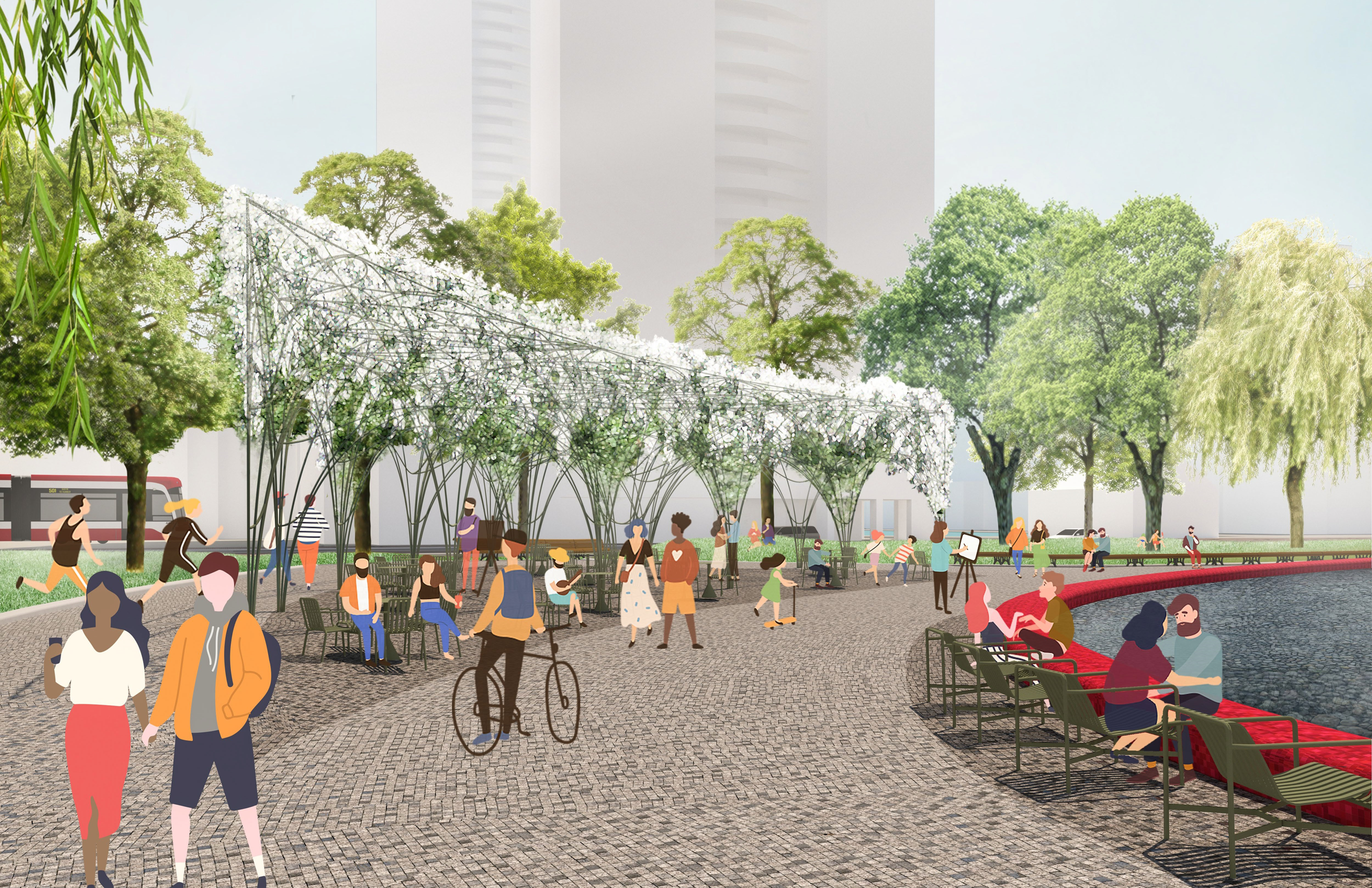 At the south-eastern edge of the park sits a trellised pavilion that anchors activity in the park.
At the south-eastern edge of the park sits a trellised pavilion that anchors activity in the park.
The delicate undulating design of the steel structure will eventually be covered by white wisteria, providing dappled shade to activity below. Dedicated moveable park furniture creates the feeling of being in an outdoor café and provides the opportunity to sit back, relax and enjoy the park from a vantage point of your choosing—in the shaded shelter of the pavilion or with your feet up near the pond edge.
The park design has also incorporated a much-needed dog off-leash area at the north east edge of the park. To send love to our furry city-dwelling friends, the design includes K9 turf, which is the same material we’ve used at Aitken Place Park. It is a specially designed material that resists the accumulation of odors and bacteria and is comfortable for dogs’ paws. And after running around with their friends, they can hydrate at the nearby water fountain, which is designed to be dual purpose for humans and dogs—don’t worry, the spouts are completely separate!
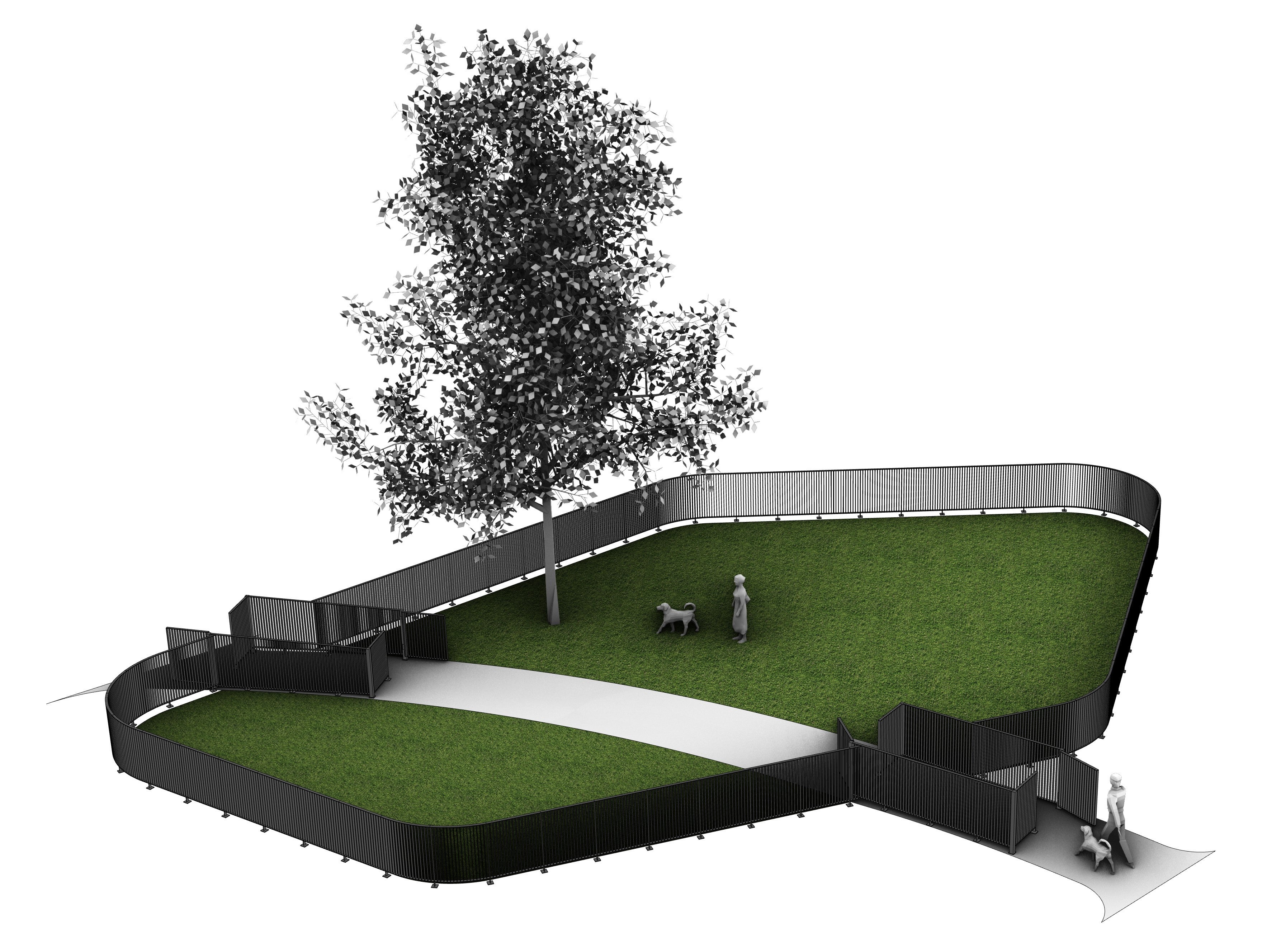 Love Park's fenced dog off-leash area will feature K9 turf, the same material used at Aitken Place Park.
Love Park's fenced dog off-leash area will feature K9 turf, the same material used at Aitken Place Park.
Designed by Claude Cormier Associés, in collaboration with gh3*, the park invites visitors to rekindle their relationship with each other within the stillness and enduring beauty of nature. When complete, a myriad of open-ended activities can be accommodated within the park including passive activities like dog walking, people-watching, socially distanced picnics, as well as small gatherings to meet the needs of local residents, waterfront visitors and office workers (when life returns to a new normal).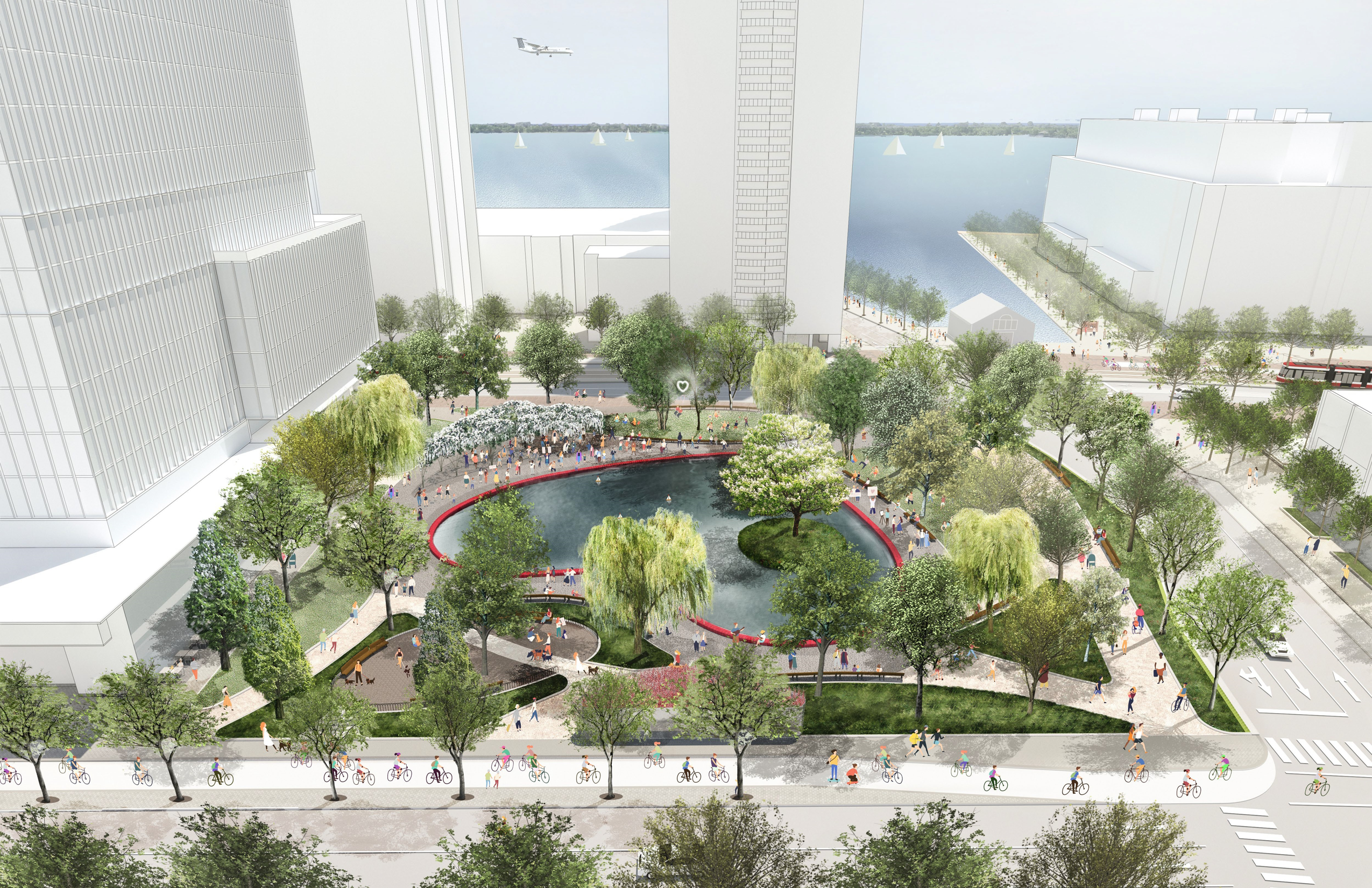
Stay tuned for upcoming blogs posts about the planting strategy for Love Park and how the park’s design contributes to the social and environmental resilience of our waterfront.
Editor’s note: This blog was updated on January 13, 2023 to correct the number of new and preserved trees.

